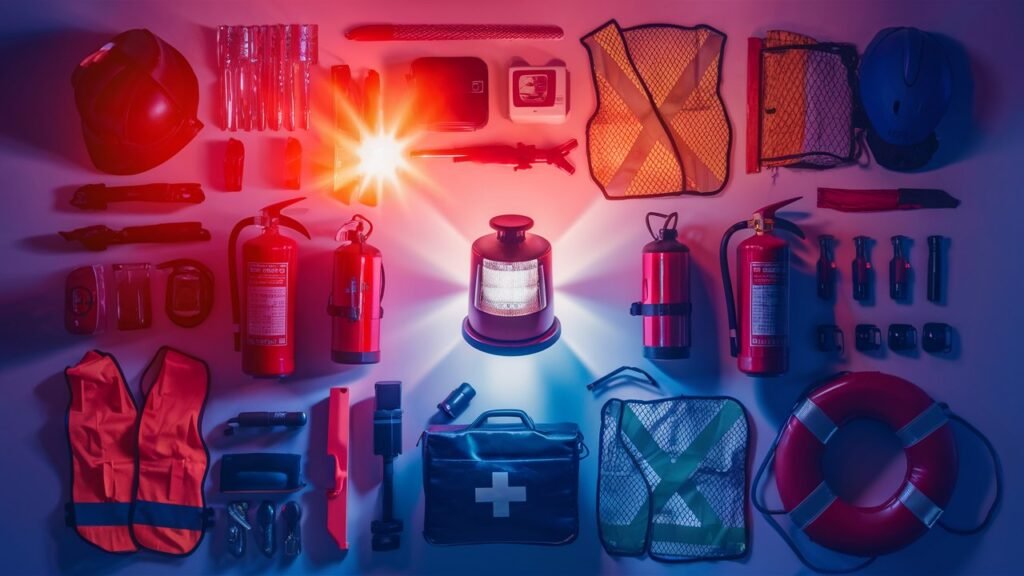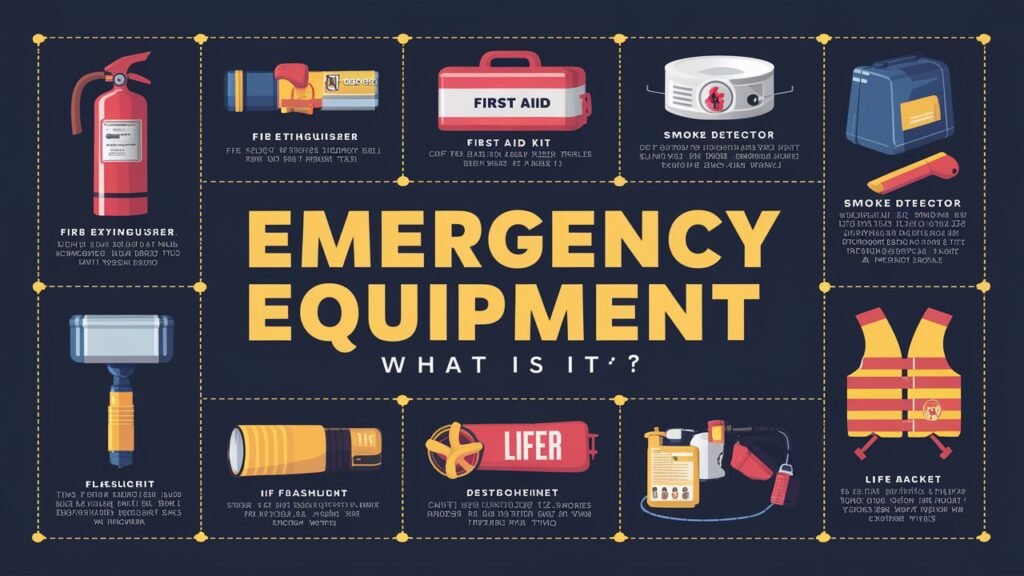Emergency equipment encompasses a range of tools and resources designed to address unforeseen and critical situations effectively. From medical emergencies to natural disasters, this equipment plays a crucial role in safeguarding lives and property.

Definition
Understanding the Concept
Emergency equipment refers to devices, tools, and protocols specifically devised to mitigate the impact of unexpected events. These could include first aid kits, fire extinguishers, emergency alarms, and more.
Types
Various Categories
Emergency equipment comes in diverse forms, each tailored to address specific types of emergencies. Categories include medical, firefighting, evacuation, communication, and safety equipment.
Importance
Significance in Different Scenarios
The importance of emergency equipment cannot be overstated. In scenarios such as medical emergencies, natural disasters, or industrial accidents, having the right equipment readily available can mean the difference between life and death.
Functionality
How Does Emergency Equipment Work?
Emergency equipment functions based on predefined protocols and mechanisms. For instance, a fire extinguisher operates by releasing chemicals that suppress flames, while a defibrillator delivers electric shocks to restore heart rhythm.
Examples
Real-life Instances
Examples of emergency equipment abound in various settings. Ambulances are equipped with medical supplies, while buildings often have fire extinguishers and emergency exit signage.

Features
Key Attributes
Emergency equipment typically boasts features such as durability, reliability, and ease of use. Additionally, some advanced equipment may incorporate smart technologies for enhanced functionality.
Maintenance
Ensuring Proper Functionality
Regular maintenance and inspection are essential to ensure that emergency equipment remains in optimal working condition. This includes routine checks, servicing, and replenishing of consumables.
Legislation and Standards
Compliance Requirements
Many jurisdictions mandate compliance with specific standards for emergency equipment. This ensures that equipment meets quality and safety requirements, reducing risks in emergency situations.
Training
Education and Skill Development
Proper training is critical for individuals responsible for using emergency equipment. Training programs cover operation, maintenance, and protocols for different types of emergencies.
Cost Considerations
Budgeting for Emergency Equipment
While essential, emergency equipment can represent a significant investment for individuals and organizations. Proper budgeting and planning are necessary to ensure access to necessary equipment without compromising financial stability.
Case Studies
Success Stories and Lessons Learned
Examining past emergency situations and how emergency equipment was utilized can provide valuable insights. Case studies offer lessons learned and best practices for future emergency preparedness.
Future Trends
Innovations and Advancements
The field of emergency equipment continues to evolve with technological advancements. Innovations such as remote monitoring systems and advanced medical devices promise to enhance emergency response capabilities.
Conclusion
In conclusion, emergency equipment plays a vital role in mitigating the impact of unforeseen events. Understanding its types, functionality, and importance is crucial for effective emergency preparedness. By investing in quality equipment, adhering to standards, and providing proper training, individuals and organizations can better safeguard lives and property.
FAQs
- What are some common types of emergency equipment? Common types include fire extinguishers, first aid kits, emergency lights, and evacuation plans.
- How often should emergency equipment be inspected? Emergency equipment should be inspected regularly, typically on a monthly or quarterly basis, depending on the type of equipment and regulatory requirements.
- What are some key features to look for in emergency equipment? Important features include durability, reliability, ease of use, and compliance with relevant standards.
- Are there legal requirements for emergency equipment in workplaces? Yes, many jurisdictions have regulations mandating the presence of certain types of emergency equipment in workplaces, along with requirements for maintenance and training.
- How can organizations ensure their emergency equipment is up to date? Organizations should establish protocols for regular inspection, maintenance, and replacement of emergency equipment. They should also stay informed about updates to relevant regulations and standards.
- What should individuals do in case of an emergency if no equipment is available? In the absence of specialized equipment, individuals should prioritize safety measures such as evacuating the area, seeking shelter, or administering basic first aid.

